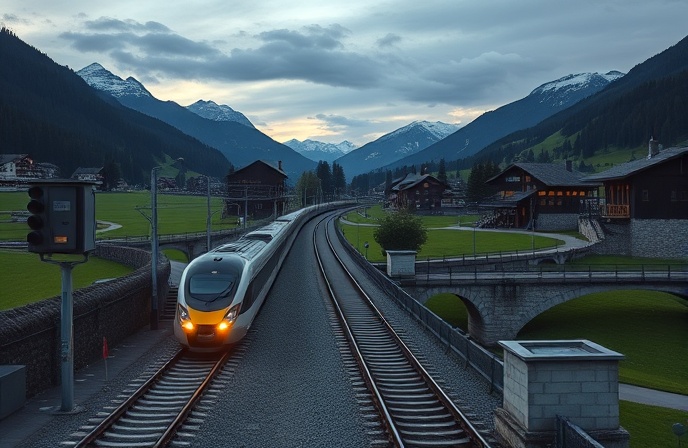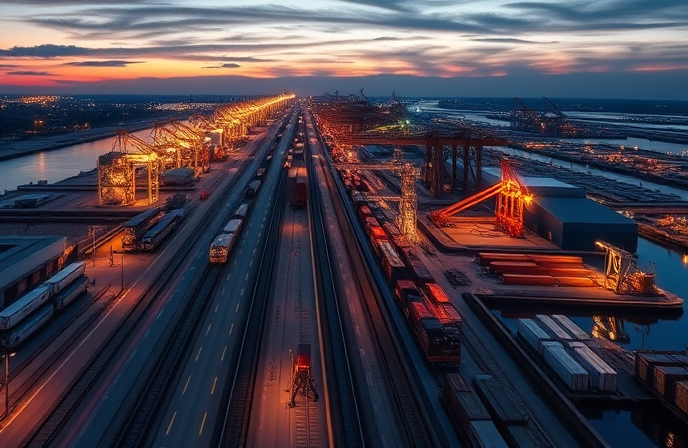Paris Metro Line 12: Hitachi Rail’s CBTC Upgrade

This article explores the significant upgrade to Paris Metro Line 12, focusing on the implementation of Hitachi Rail’s Communications-Based Train Control (CBTC) system. The adoption of CBTC represents a crucial step in modernizing the Paris Metro, enhancing operational efficiency, passenger experience, and overall network sustainability. This technological leap forward is not an isolated incident, but rather part of a larger trend towards digitalization within the global railway industry. We will examine the specifics of the CBTC implementation on Line 12, its broader implications for the Paris Metro system, and the technological advancements that underpin this project. The article further analyzes the benefits of CBTC technology, the role of partnerships in large-scale railway modernization projects, and the wider context of this project within the current landscape of intelligent transportation systems (ITS).
Hitachi Rail’s CBTC Solution for Paris Metro Line 12
Hitachi Rail has secured a €20 million ($20.89 million USD) contract to design and install its Communications-Based Train Control (CBTC) system on Paris Metro Line 12. This 17.2km line, featuring 31 stations, is a critical artery within the Paris Metro network. The contract includes options for additional orders totaling up to €65 million ($67.8 million USD), encompassing maintenance services. This project falls under the RATP (Régie Autonome des Transports Parisiens) OCTYS 2030 program, a comprehensive initiative to modernize the entire Paris Metro system. The selection of Hitachi Rail underscores the company’s established expertise in CBTC deployment and its strong partnership with RATP. The successful implementation on Line 12 will build upon previous Hitachi Rail CBTC projects on Lines 3 and 6, solidifying their position as a key player in the Paris Metro’s modernization efforts.
Technological Advancements and Benefits of CBTC
CBTC represents a significant advancement over traditional signaling systems. Unlike legacy systems relying on track circuits for train detection and control, CBTC utilizes continuous, bi-directional communication between trains and wayside equipment. This allows for precise train positioning and more efficient train following distances, ultimately increasing line capacity and operational flexibility. The system enhances safety through automatic train protection (ATP) features, preventing collisions and overspeeding. Furthermore, CBTC offers improved scalability, accommodating future growth and expansion of the network. For passengers, this translates to more frequent and reliable service, potentially shorter headways (the time between trains), and a smoother, overall more comfortable travel experience. For operators, CBTC provides enhanced control and monitoring capabilities, allowing for optimized resource allocation and proactive maintenance planning.
The Role of Partnerships and Collaboration
The Paris Metro Line 12 project highlights the importance of collaboration in large-scale railway infrastructure projects. The successful partnership between Hitachi Rail and RATP underscores the value of leveraging expertise and resources from both the technology provider and the operational authority. This synergistic approach ensures that the implemented solution aligns perfectly with the specific needs and operational requirements of the Paris Metro. Hitachi Rail’s experience in deploying CBTC globally, combined with RATP’s deep understanding of the Paris Metro’s operational complexities, ensures a solution that is both technologically advanced and operationally effective. This collaborative model is crucial for managing the risks and complexities inherent in projects of this magnitude and can serve as a successful model for other railway modernization initiatives around the world.
Implications for the Future of the Paris Metro and Beyond
The successful implementation of CBTC on Line 12 is a significant milestone in the modernization of the Paris Metro. It sets the stage for the potential adoption of similar technologies on other lines within the network, contributing to the overall enhancement of the system’s efficiency, safety, and sustainability. Moreover, this project showcases the growing trend of digitalization within the railway sector globally. The application of advanced technologies such as CBTC represents a paradigm shift in how railway networks are designed, operated, and maintained. The experience gained in this project can inform and inspire similar modernization efforts in other major metropolitan areas worldwide, facilitating advancements in public transport systems and contributing to the broader goals of sustainable urban development.
Conclusion
The deployment of Hitachi Rail’s CBTC system on Paris Metro Line 12 signifies a considerable advancement in urban rail technology. This €20 million project, part of RATP’s OCTYS 2030 modernization plan, represents a successful collaboration between a leading technology provider and a major transit operator. The adoption of CBTC offers numerous benefits, including increased capacity, enhanced safety through automatic train protection (ATP), improved operational efficiency, and an elevated passenger experience. The project highlights the wider trend of digitalization within the global railway industry, showcasing the potential of advanced technologies like CBTC to revolutionize public transportation. The collaborative model employed in this project—leveraging the expertise of both Hitachi Rail and RATP—serves as a best-practice example for future large-scale railway modernization efforts. The success of this implementation on Line 12, following similar projects on Lines 3 and 6, underscores the potential for widespread adoption of CBTC technology within the Paris Metro network and beyond, ultimately leading to more efficient, sustainable, and passenger-centric urban transit systems.






